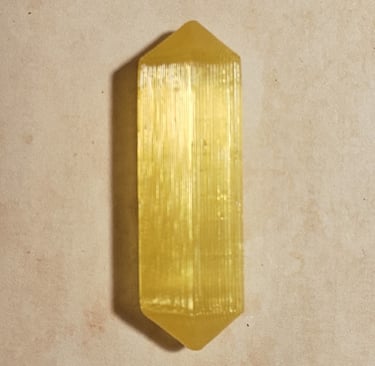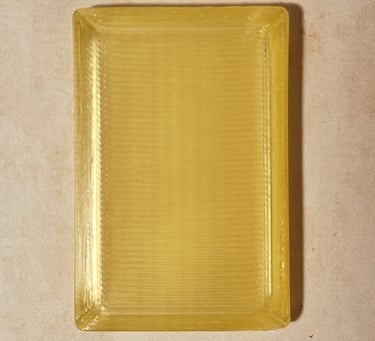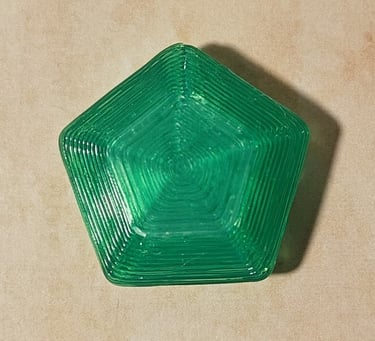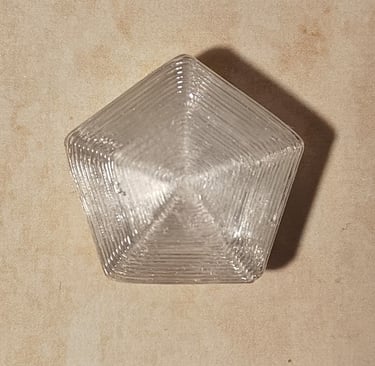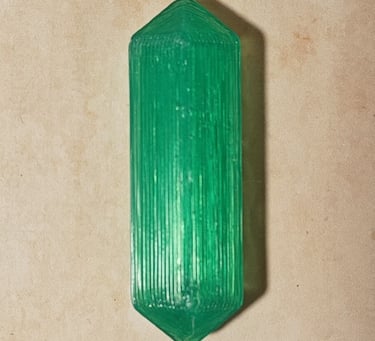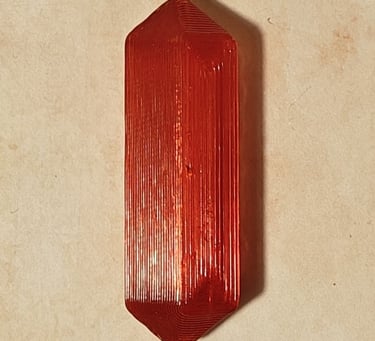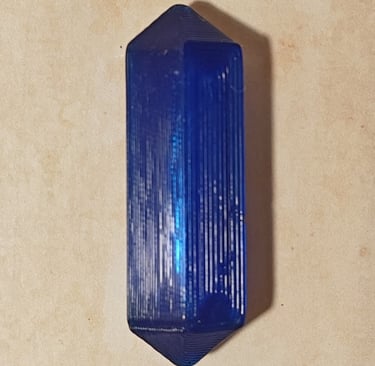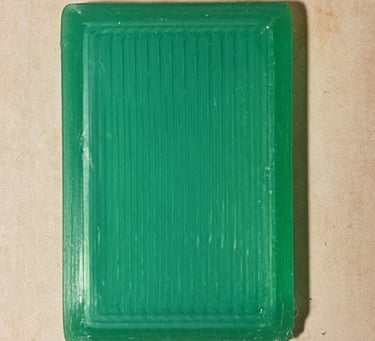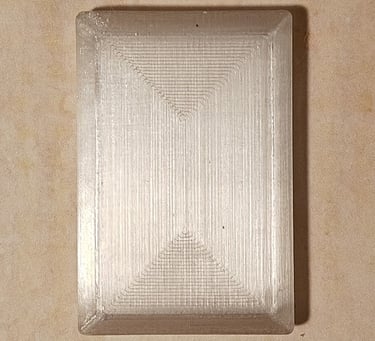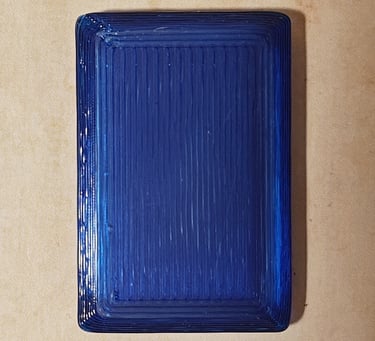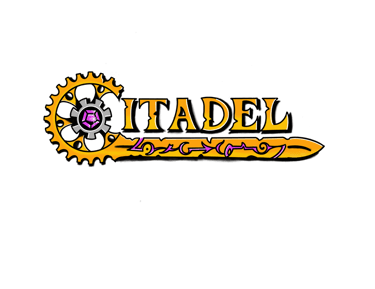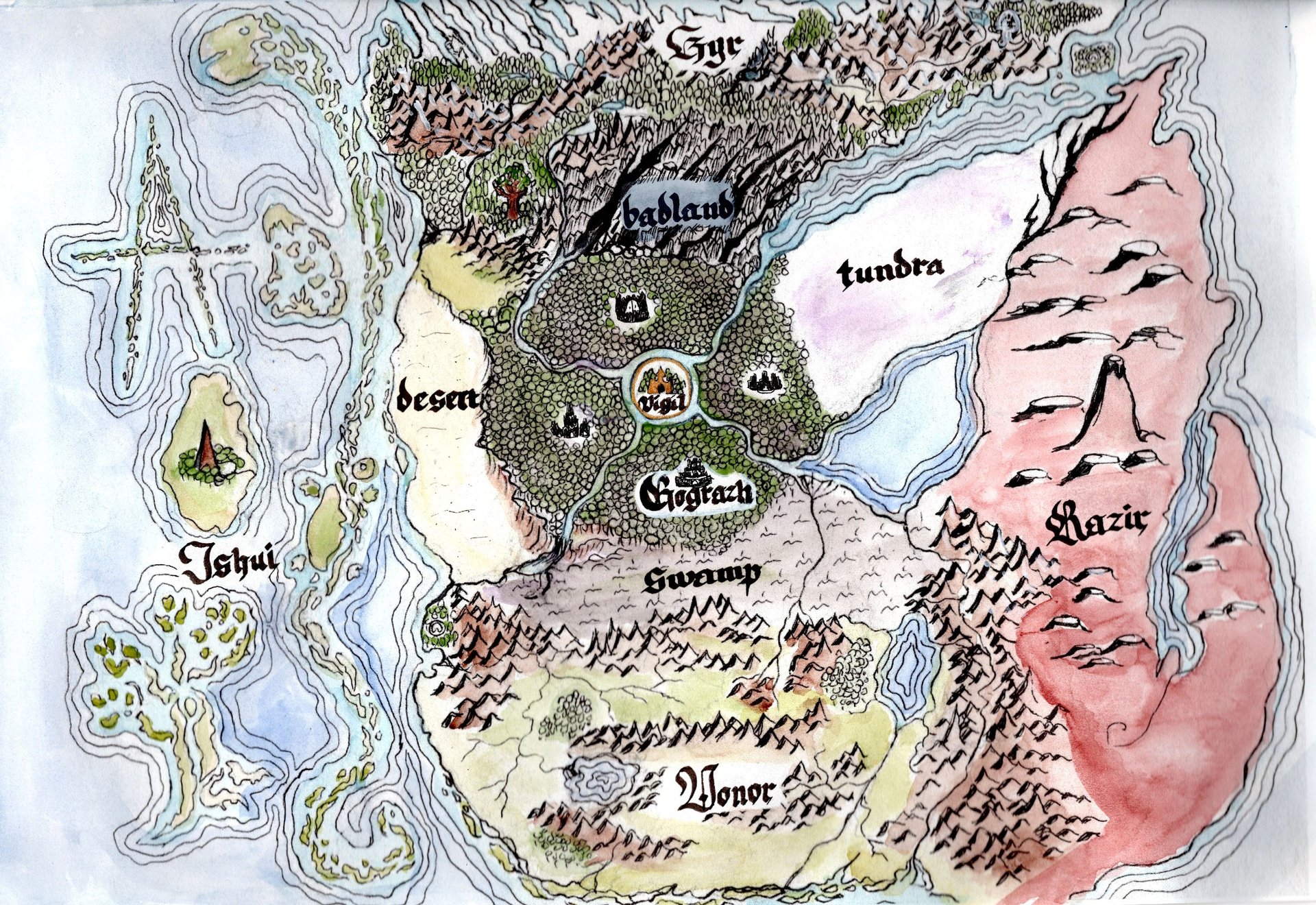
Magic of Tokavah

Essence, the proper name for magic in Tokavah, suffuses through everyone and everything. A philosopher might say that every trade, craft, and venture of humankind is just an exercise in shaping Essence. For those of a more practical outlook, magic is the manipulation of the five Aspects of Essence.

Magic of Tokavah Index:

Aspects of Magic
Magic is commonly expressed as one of the five Aspects of Essence: Air, Earth, Fire, Light, and Water. Although some may seem in natural opposition (such as Fire and Water), each Aspect is never truly in isolation. To have Fire without Water would result in an uncontrollable inferno. To have Water without Fire would result in stagnant ice. The same is true between all interactions of the Aspects. Pure Essence, also known as Kal'tov, is merely an equal portion of all five Aspects in harmony. However, each Aspect does have its own unique strengths and uses.
Air
The Aspect of Air is associated with the concepts of breath, intelligence, logic, creativity, and the future. Those who specialize in this Aspect often place high value in influencing a situation to their advantage. This could mean giving themselves or their allies a beneficial effect or inflicting their enemies with a negative one. Air may also give glimpses into the future.
Earth
The Aspect of Earth is associated with the concepts of foundations, formation, permanence, physical body, and mortality. Those who specialize in this Aspect often place high value in standing firm against tribulation and remembering those who have died. Some wielders of Earth choose to become resilient warriors, while others care more about interacting with those who have passed beyond this life.
Fire
The Aspect of Fire is associated with the concepts of action, vitality, passion, wilderness, and the present. Those who specialize in this Aspect often place the highest value on fast, effective, and powerful spells. Although Fire is well suited for offensive use, it can also be used as a cleansing and purifying force.
Light
The Aspect of Light is associated with the concepts of connection, empathy, justice, growth, and eternity. Those who specialize in this Aspect often are most interested in how their magic can assist others or grow in new ways. Although this frequently includes healing spells, it may incorporate utility or offensive ways to use magic in order to swiftly enact justice against evil.
Water
The Aspect of Water is associated with the concepts of creation, blood, mystery, wisdom, and the past. Those who specialize in this Aspect often focus on the cyclical nature of all things and how what has been may be the springboard for what could be. Healing magic is common for the Aspect of Water, but just as the ocean holds both life and death, it can be a powerful, mysterious force. Water may also offer glimpses or insight into the past.
Kal'tov and Kal'inokh
There are two other expressions of magic: Kal'tov and Kal'inokh. As mentioned above, Kal'tov, is another word for pure Essence. Humans are not usually able to wield such a strong expression of raw Essence.
Kal'inokh is a corruption of Essence - an intentional imbalance that has great power but also great danger. Wielding Kal'inokh magic can tear apart your very soul. The use of Kal'inokh magic is strictly forbidden by all the human nations, but it is the primary type of magic used by the Gograzhi.


Expressions of Magic
There are five main ways that humans can manipulate and wield the Aspects of Essence.
Wizardry - Practitioners of Wizardry bend the forces of magic to their will by shaping runes of power. They cast spells, and then store them into their Focus for later activation. Wizardry offers a wider range of effects, particularly unusual utility effects, than any other form of magic. You can find out more on the Magic Skills page.
Channeling - Sometimes contact with an elemental power awakens something within a person, granting them a direct connection to an Aspect of Essence. Channelers don't require a Focus like wizards because they are the Focus. They act as living vessels of elemental power. You can find out more on the Magic Skills page.
Inscription and Sigilcraft - Inscription is the art of infusing Essence into paper and ink. Practitioners of this art, called Scribes, copy magical formulations and rituals, create spellscrolls, glyphs, and magical contracts. Some Scribes hone their magic further by learning Sigilcraft, which is a dynamic infusion of power into a Sigil that is quickly released. You can find out more on the Trade Skills page.
Artificing and Arcanatech - Artificers take raw metals and other materials and craft them into useful items. Although their day to day craft may not involve a lot of flashy magic, they understand how the Aspects interact with physical objects. Some Artificers learn to directly imbue their creations with magic, which is called Arcanatech. You can find out more on the Trade Skills page.
Physicker Studies and Alchemy - Physickers understand how Essence interacts with the physical body in order to cure ailments, heal Wounds, and craft brews and salves to assist the healing process. Alchemists take that even further, learning to precisely balance the extracted properties of ingredients in order to create even more potent elixirs, chemicals, and poisons. You can find out more on the Trade Skills page.


Ceremonial Magic
Ceremonial magic harnesses and directs the ambient magic of Tokavah, and can be initiated by anyone, regardless of other spellcasting ability. It usually involves a group performance of a ceremony purpose-built for the intended task. Ceremonies are common throughout the world, examples include:
Weddings
Naming Ceremonies
Graduations
Orani ceremonies of joining/separation with a specific tribe
Coming-of-Age ceremonies
Priestly Ordination
Purification Ceremonies
A ceremony generally requires the following elements:
Intent. The Player(s) decide what they're trying to accomplish, as clearly as possible. Spirit is more important than letter here, in most cases.
Structure. The participants decide on a structure, and order of the ceremony. This can be highly variable, but all ceremonies require a clear start point and end point.
Content. This is all the stuff in the middle, the purpose of which is to direct the magic in support of the stated goal. Common elements of ceremonies include:
A drawn circle or such, defining the physical boundaries of the ceremony
magic markings or diagrams
words/recitation
music
gestures, or other physical actions
consumables, (candles/potions/food/water)
physical objects related to or symbolic of the intent
Any number of these elements may be used, or anything else which seems fitting. Players with appropriate lores may ask a marshal for guidance on whether and how particular elements may or may not support a given ceremony.
A Marshal. A Marshal must be present for all ceremonies. The Marshal will determine when is an appropriate time; players with certain Astrology skills may receive additional information about times and places conducive to the outcome. The Marshal will observe and record the entire ceremony, and make a random draw at the end (impacted by the elements contributed to the ceremony). The marshal will then communicate the outcome, whether or not the intent is achieved, and any additional effects or consequences resulting.


Language of Magic
All humans of Tokavah speak a common language. However, ancient texts reveal another language, known as Seraphic. Seraphic has been given the title "the language of magic" as it is perfectly suited for the flow of Essence within a script or enchantment.
Most people can recognize it when they see it and perhaps even identify a handful of words. Those who practice any of the magical arts may have a greater familiarity with it, although in different ways and different uses.
Scribes use it frequently for their work in spellscrolls, contracts, and almost every other aspect of their craft.
Artificers sometimes engrave Seraphic words into their creations as it can resonate with and solidify the enchantment.
Physickers don't use it much, except to read ancient recipes, but Alchemists may use it when considering formulas.
Modern wizard rituals are in the common tongue, but ancient ones written all in Seraphic are sometimes found.
Channelers most often share their magic orally or practically, so written records are unusual, but ancient documents of Channeling spells have been found in Seraphic.
It is a fairly phonetic language, and uses the start and end brackets to set off sentences.


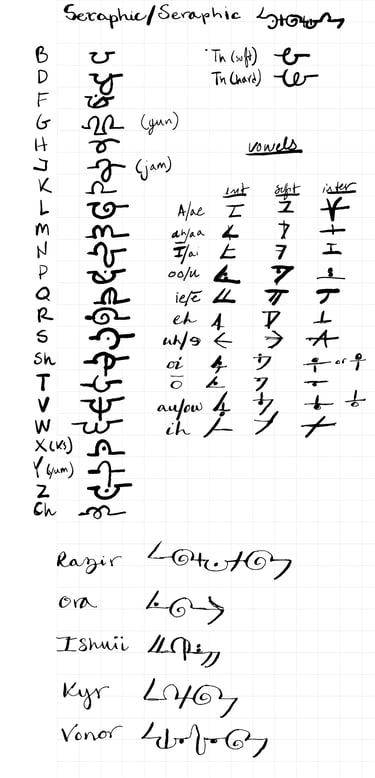

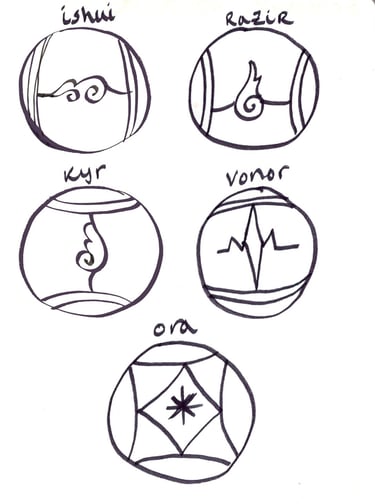




Materials of Magic
Although all things contain Essence, it is rarely possible or practical to use that magical potential. However, when the circumstances are just right, a crystal containing the power of an Aspect of Essence may form. These crystals are called kalzokash. Each type holds a nearly pure spark of a particular Aspect of Essence.
The smallest and most common type of kalzokash are referred to as "motes". These are found in areas of concentrated magical energy. Adventurers also gain kalzokash motes by defeating lesser Gograzhi, as their corpses dissolve in short order and leave only a mote behind.
The greater form of kalzokash are called "shards". Most people have seen a kalzokash shard, and some people are lucky enough to find one, but the majority of shard discovery requires meticulous searching and knowledge of where to look. However, since the Citadel opened, they have been more frequently seen and traded.
The strongest type of kalzokash, known also as the exalted form, are called "hearts". Finding a kalzokash heart is an extremely rare occurrence.
Kalzokash are used most frequently by the Trade Skills during production of their crafted items, but are sometimes utilized by Ritualists and Channelers as spell components. Alchemists are able to transmute a kalzokash into a different Aspect type.
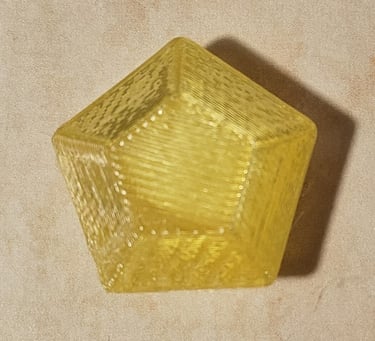

Air - Gust Mote
Air - Storm Shard
Air - Aethereal Heart
Earth - Clay Mote
Earth - Lithic Shard
Earth - Crowned Heart
Fire - Cinder Mote
Fire - Flame Shard
Fire - Volcanic Heart
Light - Bright Mote
Light - Illuminated Shard
Light - Incarnate Heart
Water - Rain Mote
Water - Tidal Shard
Water - Thalassic Heart

